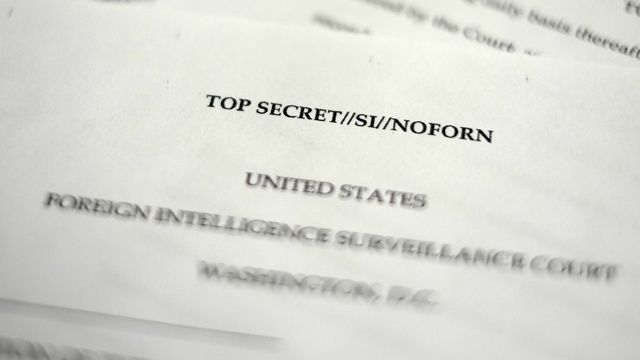This article first appeared at The Nation.

Today the Committee to Protect Journalists unveiled a detailed, sober assessment of press freedom in the United States during President Obama’s tenure. The report concluded that far from fulfilling his campaign promise to improve transparency, the president has instead presided over an unprecedented campaign to contain leaks and to control media coverage of government operations.
The fact that the CPJ issued the report at all underscores how hostile official policy has been to journalists. While the CPJ has reported on press freedoms in countries around the world since the early 1980s, this is its first investigation focused on the United States. Leonard Downie Jr., former executive editor of The Washington Post, wrote the report, with input from several dozen Washington journalists, media advocates and former government officials.
Downie told The Nation he was most surprised by the unanimity of those reporters about the ways the administration has made their jobs more difficult. The level of specificity the many journalists were able to provide convinced him that the problems were pervasive and exceptional. “The Obama administration’s aggressive war on leaks and its determined efforts to control information that the news media needs to hold the government accountable for its actions are without equal since the Nixon administration,” he said at a press conference this morning.
What sets the Obama administration apart from others, said Downie, is not its attempt to control the media narrative but rather its ability to do so. “What’s significant here is the very sophisticated, very successful, very determined way they’ve gone about doing this,” Downie told The Nation. “Most administrations aren’t very successful. This one has been very tightly disciplined.”
Among the most egregious actions cited in the report for having a chilling effect on the press are the prosecution of eight government employees or contractors under the 1917 Espionage Act, more than twice as many as all previous administrations combined; the restriction of normal reporter-source relationships by aggressively pursuing leaks, using secret subpoenas and by implementing a program requiring federal employees to monitor one another for signs of unauthorized disclosures; hostility to press inquiries and reluctance to release information; and the use of the administration’s own internally created media to bypass the press.
The report does acknowledge several efforts to improve transparency. On his first day in office, Obama directed agencies to expedite Freedom of Information Act requests and to publish more information online and in December 2009 he directed officials not to classify materials if they doubted that they should be secret. Obama signed the Whistle Blower Enhancement Protection Act last November, which was intended to protect federal employees from retaliation, including workers in the intelligence community. He has given far more interviews to news media than Clinton or Bush in their first term.
But the CPJ report characterizes many of these voluntary actions as serving the administration’s own publicity needs, rather than the public interest. Think of the White House’s insistence during the 2012 campaign that all quotes be vetted before publication. Purported attempts to lift the veil have been “part of a strategy, honed during Obama’s presidential campaign, to use the Internet to dispense to the public large amounts of favorable information and images generated by his administration, while limiting its exposure to probing by the press,” the report says.
The administration deftly wields social media, Internet videos and government sites, like “IC on the Record,” a forum for the intelligence community to post statements and declassified documents that launched after the Snowden revelations about NSA spying. Reporters quoted in the report say official photos and videos are used not to supplement outside press coverage but to replace it. Official media of events the press is not invited to or informed about create the illusion of openness, but the line between free information and propaganda blurs when there are no other lenses in the room.
What could have been real steps toward reform ultimately proved less than robust. The whistleblower protections Obama signed were undercut by an appellate court decision that left employees in positions deemed “sensitive” to national security unable to appeal personnel decisions by their agencies, meaning they cannot challenge retaliatory terminations. This year, Obama asked Congress to resume work on national shield legislation to protect reporters from criminal prosecution if they refuse to reveal their sources under court order, but he has also demanded the law include a national security loophole that may leave out the journalists most in need of protection.
Many of the administration’s moves towards transparency followed unauthorized disclosures of secret activities and appear not to have been made voluntarily at all. For example, the White House recently declassified many documents pertaining to the FISA court that approves the NSA’s request for spying authority and Obama has expressed support for tightening privacy protections and for the addition of a special advocate to argue in the public interest at FISA hearings. But, the CPJ report argues, “the Obama administration… should have been more open and accountable for the NSA’s surveillance activities in the first place. It seems highly unlikely that this new transparency would have begun without Snowden’s disclosures.”
The report lays out various policies meant to deter whistleblowers and freeze communications between the press and government sources (other than PR personnel). They include personnel rules requiring employees to report misconduct internally before going to Congress and the Insider Threat Program, under which employees at most federal agencies are expected to watch and report on their coworkers for indications of wrongdoing. Such programs may discourage the disclosure not only of serious abuses of power but also of internal waste, fraud or misconduct.
The revelations about the scope of the NSA’s surveillance programs raise other questions about press freedom. While there are no known instances of the NSA’s spying on reporters, Downie said that knowledge of the metadata collection program, particularly on the heels of the subpoena of journalists’ records in leak investigations, made reporters more fearful that their activities are being monitored.
If the chilling effect is the result of official policy, as the report argues, rather than an abstraction, the White House must make deliberate and systematic reform if it’s serious about transparency. To that end, the report concludes with six recommendations to the administration. A group of eighty organizations also concerned about government transparency are meeting in Washington today and tomorrow to discuss recommendations for improving responsiveness to FOIA requests. Unfortunately, said CPJ’s executive director Joel Simon, “[The administration’s] perception is that this is not an issue… we’re hopeful that by elevating the issue, by bringing it to the attention of administration officials, that opens the door for serious engagement.”


